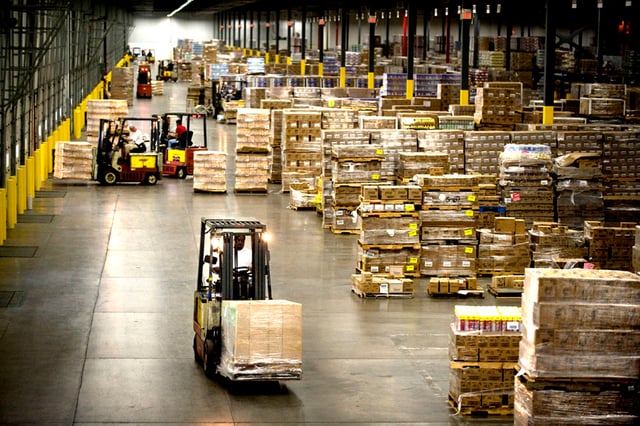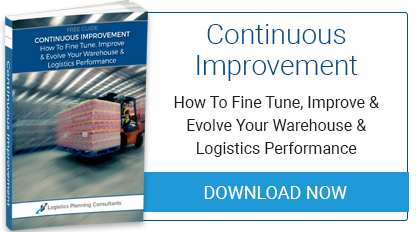
There are several reasons why you might seek to improve your warehouse operation. Changes may be triggered by external factors, such as new legislation, different products or evolving business objectives. Or they may be prompted by a review of your warehouse and logistics processes, whether in order to diversify your services, accommodate new customers or reduce your operating costs.
In all cases, it is useful to think in terms of improvement, rather than simply adaptation or change management. Change is a constant in business, and an improvement strategy allows you to take control of these factors and use them to your advantage. The factors guiding your improvement strategy are your Key Performance Indicators (KPIs), which tie changes to specific gains in efficiency or productivity essentially reducing costs.
How do you go about improving your warehouse operation? These ideas will give you some indication about what is achievable.
1) Embracing New Technologies
Communication technologies are transforming warehouse management in subtle but important ways. The big advance of the last decade was barcoding linked to Warehouse Management Systems (WMS) – something which is still being implemented by many businesses. Other technologies are now opening up new opportunities in different areas. These include:
- Pallet tagging
- Radio frequency identification (RFID) tagging / tracking
- Voice-activated processes
- Productivity monitoring systems
- Automated, POS initiated ordering
All these technologies give you greater insight into your operation and open up possibilities for control and improvement.
2) Automation
Warehouses are frequently viewed as the archetypal manual work environment, and this is still largely true for small to medium-sized operations. However, large warehouse operators are increasingly implementing automation systems to lower operating costs and reduce dependence on labour. These automation technologies allow businesses to expand beyond the restrictions placed by purely manual operation, with positive effects throughout the entire supply chain.
Smaller businesses are now starting to make use of these technologies too, with faster implementations and lower costs becoming available. Automated systems include powered conveyors for carton transfers, all the way up to highly automated distribution centres – such as those operated by Amazon.
Warehouse businesses should not unthinkingly embrace automation, in our opinion, as many of these technologies are expensive to implement and may cause disruption to or limit flexibility for your business. However, it pays to have an open mind to new technologies and to embrace all potential opportunities when looking at continual improvement.
3) Sustainability
Environmental sustainability not only gives warehouse businesses a ‘feel good factor’ and allows them to comply with environmental legislation, but in many cases it also provides valuable efficiency savings. Green technologies are improving to the point where they are frequently more efficient than traditional alternatives. New, sustainable technologies which may bring savings to a warehouse include:
- Ground source heat pumps (GSHP) or air source heat pumps (ASHP)
- Reusable pallets
- Energy recycling systems e.g. electricity generation
- Solar panelling
- Wind turbines
- Rain harvesting
- Eco-friendly insulation
- Sensor operated, energy-efficient lighting
Adopting these technologies in line with your continuous improvement plan will bring both monetary savings and a reduction in your carbon footprint, giving a positive reputational boost to your business.
4) Staff Involvement
In an age of new technologies, computerised management and automation, your warehouse staff are still your number one asset, and this is unlikely to change. Any continuous improvement plan must have the active involvement and support of staff at all levels, from senior management down to administrators and machine operators.
It isn’t enough to communicate targets and policies from the top down as if they were diktats, as this won’t achieve genuine buy-in from your employees. Instead, you should try and encourage a culture of continual improvement, with teamwork and communication and everyone involved in a feedback structure, from the top to the bottom level.
Every employee should have their own KPIs and their role to play, but this should be structured in a way that complements, rather than obstructs their role. Monitoring is essential to making this work, but this should be implemented as a supporting function, and not as another burden.
Implementing A Continuous Improvement Strategy
To find out more about warehouse improvement, take a look at the latest free title from our e-book series: Continuous Improvement; How to fine tune, improve & evolve your warehouse and logistics performance. The guide takes a practical, results based approach to warehouse management, showing you how to make progressive changes to efficiency that will transform all aspects of your operation.
To chat with one of our logistics consultants about implementing a bespoke improvement plan for your business, please call us on +44 (0) 1285 640038.


